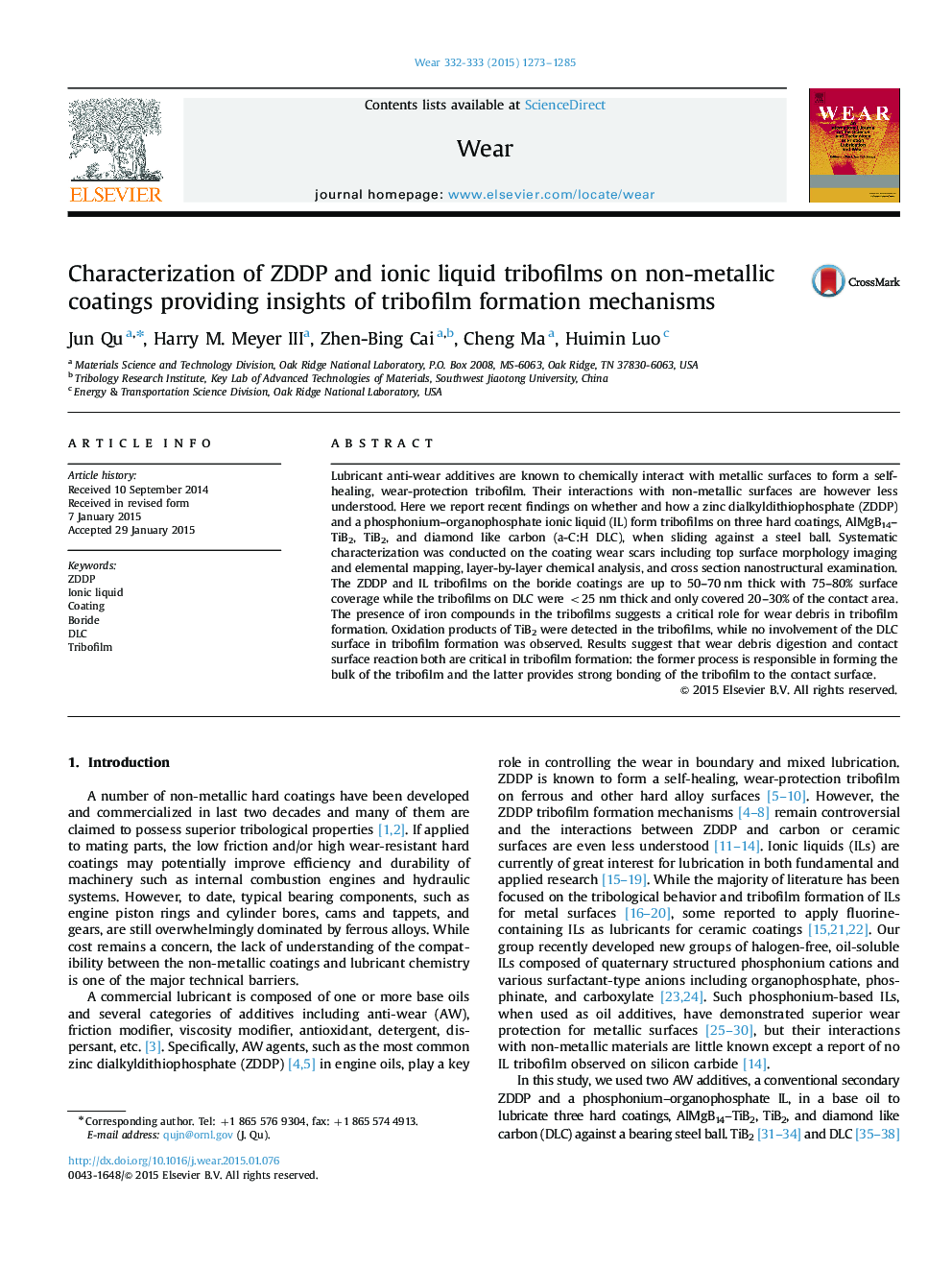| کد مقاله | کد نشریه | سال انتشار | مقاله انگلیسی | نسخه تمام متن |
|---|---|---|---|---|
| 617141 | 1454975 | 2015 | 13 صفحه PDF | دانلود رایگان |

• ZDDP and IL tribofilms on boride coatings: >50 nm thick and >75% surface coverage
• ZDDP and IL tribofilms on a-C:H DLC: >25 nm thick and >30% surface coverage
• Wear debris digestion and contact surface reaction critical in tribofilm formation
• Unambiguous evidence obtained for the wear debris digestion mechanism
Lubricant anti-wear additives are known to chemically interact with metallic surfaces to form a self-healing, wear-protection tribofilm. Their interactions with non-metallic surfaces are however less understood. Here we report recent findings on whether and how a zinc dialkyldithiophosphate (ZDDP) and a phosphonium–organophosphate ionic liquid (IL) form tribofilms on three hard coatings, AlMgB14–TiB2, TiB2, and diamond like carbon (a-C:H DLC), when sliding against a steel ball. Systematic characterization was conducted on the coating wear scars including top surface morphology imaging and elemental mapping, layer-by-layer chemical analysis, and cross section nanostructural examination. The ZDDP and IL tribofilms on the boride coatings are up to 50–70 nm thick with 75–80% surface coverage while the tribofilms on DLC were <25 nm thick and only covered 20–30% of the contact area. The presence of iron compounds in the tribofilms suggests a critical role for wear debris in tribofilm formation. Oxidation products of TiB2 were detected in the tribofilms, while no involvement of the DLC surface in tribofilm formation was observed. Results suggest that wear debris digestion and contact surface reaction both are critical in tribofilm formation: the former process is responsible in forming the bulk of the tribofilm and the latter provides strong bonding of the tribofilm to the contact surface.
Journal: Wear - Volumes 332–333, May–June 2015, Pages 1273–1285